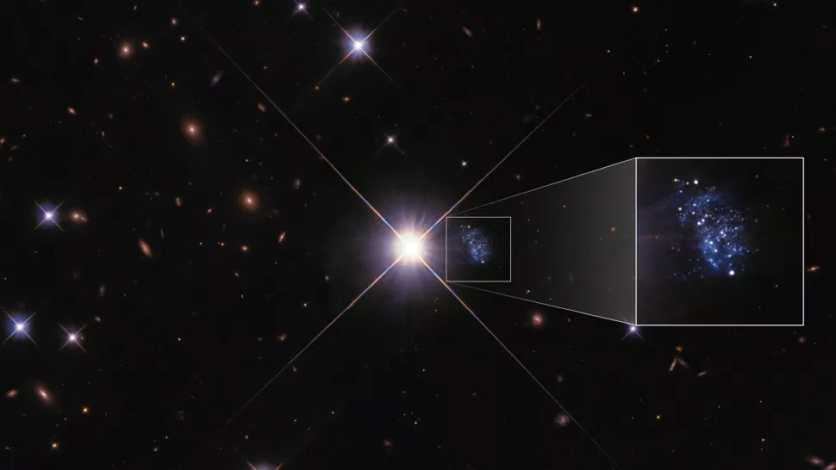Somewhere in the vast space of stars and galaxies, a tiny dwarf sneaks into the view while trying to hide in the glare of a foreground star.
This strange dwarf galaxy is shrouded in a local pocket of dark matter and according to astronomers, it gives us a glimpse of the early universe.
Hence, it was named "Peekaboo."

Metal-poor Galaxy
The dwarf galaxy appears to be an "odd one out" in our local universe since astronomers believe that it hails from a very distant time: the early stages of galactic evolution.
Astronomers found that Peekaboo is an exceedingly metal-poor galaxy, which means that it lacks metals or chemicals that are necessary for the production of stars. NASA's Hubble Space Telescope confirmed this after capturing the strange dwarf.
But what is even more fascinating is that Hubble's data indicate that Peekaboo's stars appear to be one of the youngest galaxies ever observed in our universe.
Hubble was able to select particular stars for examination. The find offers astronomers a chance to study a galactic artifact and gives them a direct window to look into the universe's distant history.
Uncovering the Peekaboo
The tiny galaxy HIPASS J1131-31, which measures just 1,200 light-years across, has earned the moniker "Peekaboo" due to its recent appearance from behind a fast-moving star that had previously prevented researchers from seeing it.
Professor Bärbel Koribalski, an astronomer at Australia's national science agency CSIRO and a co-author of the most recent study on Peekaboo's metallicity, discovered Peekaboo as an area of cold hydrogen two decades ago using Australia's Parkes radio telescope Murriyang in the HI Parkes All Sky Survey.
It was then identified as a compact blue dwarf galaxy by NASA's far-ultraviolet Galaxy Evolution Explorer (GALEX) spacecraft.
Hubble found 60 stars in the dwarf galaxy appearing to be a few billion years old or younger.
Key Distinction
The most recent discoveries highlight Peekaboo's key distinction from other galaxies in the nearby cosmos, which often feature old stars that are billion years of age.
NASA said that Peekaboo is one of the youngest and least chemically loaded galaxies ever discovered in the nearby universe. Given that the local universe has had around 13 billion years to form, this discovery is indeed in mind-boggling.
However, Hubble's pictures are still limited to astronomers since it was only taken as part of the Every Known Near Galaxy Survey - a program that aims to collect a wealth of data containing neighboring galaxies.
Hence, the research team intends to do additional research using Hubble and the newly-minted James Webb Space Telescope to fully open the windows that this strange dwarf galaxy is offering for the early universe.
Related Article : 'Hubble vs James Webb Telescope:' Is NASA Webb's Deepest Image of the Universe Stunningly Clearer?

ⓒ 2025 TECHTIMES.com All rights reserved. Do not reproduce without permission.




